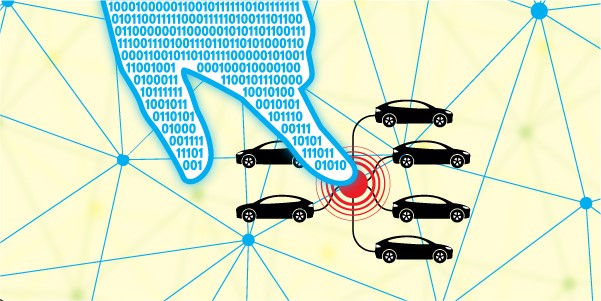EPRI developed a tool called HotSpotter that utilities can use to pinpoint the most vulnerable customer service transformers
As electric vehicle (EV) charging expands in many countries, utilities need tools to identify potential impacts to the distribution grid. Since 2012, EPRI has investigated these impacts.
“We found that the initial impacts of residential charging are not along the distribution power lines or near the substations but at the service transformers that step down the electricity voltage in distribution lines to the level used by customers,” said EPRI Senior Technical Executive Arindam Maitra. “Those are the weak spots for residential charging, and the worry is that high EV penetration in certain areas could lead to the transformers overloading.”
Building on this finding, EPRI developed a tool it calls HotSpotter that utilities can use to pinpoint the most vulnerable customer service transformers. “It identifies ‘hotspots’ where transformers have the highest probability of overloading, and it indicates power ratings of transformers that could be vulnerable,” said Maitra. “This information can help utilities prioritize mitigations.”
By analyzing EV adoption rates, charging times and rates, and other EV data, HotSpotter simulates load impacts on a transformer based on its nameplate rating, peak load, the number of customers it serves, and other characteristics.
“HotSpotter can estimate customer-level charging impacts as a result of growing EV adoption and calculate the cost of transformer replacements,” said Maitra.
HotSpotter at Work in Sacramento
Sacramento Municipal Utility District (SMUD) used HotSpotter to assess the potential impacts of EV adoption on its distribution system.
“EVs offer economic and environment benefits and can lead to load growth,” said SMUD Senior Engineer Deepak Aswani. “We wanted a rigorous understanding of the value of EV adoption, the grid impacts, and how electricity rates could mitigate those impacts.”
SMUD developed a tool in-house to model EV adoption and to compare the grid impacts of different charging power levels and times. While the internal tool was helpful, several factors led the SMUD team to use HotSpotter to augment these analyses. Unlike HotSpotter, the SMUD tool wasn’t able to model different transformer sizes and number of customers. HotSpotter operates more quickly and can be reconfigured more easily to modify the modeling scenarios.
“SMUD used the HotSpotter tool to more quickly and easily run additional analyses and evaluate how grid impacts vary depending on service transformer sizing, the number of customers associated with each transformer, and EV load shapes,” said Dwight MacCurdy, energy research and development project manager at SMUD. “We learned how to strengthen grid reliability and support EVs based on regional differences in our distribution system. HotSpotter is a very versatile, user-friendly, and useful tool for examining EV load impacts.”
Findings from HotSpotter simulations and related research with EPRI technical staff include:
- Across SMUD’s service territory, charging 93,000 additional EVs could result in approximately 1,000 transformer overloads.
- Replacing each pole-mounted transformer and pad-mounted transformer would cost $4,700 and $6,000, respectively.
- Simulated overloads were concentrated in hotspots: About 50% of the service transformer overloads occurred in distribution feeders associated with 10% of SMUD’s substations.
- Grid impacts could be mitigated by using time-of-day rates to shift EV charging from late-afternoon peak demand to night, potentially avoiding the need to invest in system upgrades.
“EVs have the potential to reduce the cost of electricity by increasing consumption of lower cost off-peak energy,” said Aswani. “The HotSpotter analysis confirmed our internal analysis, demonstrating that the time-of-day rate design can encourage EV drivers to shift charging to off-peak times. This makes our grid more efficient.”
SMUD is considering using HotSpotter also to better understand the impacts to its system of large numbers of electrified buses and trucks. “In Sacramento, as in other areas of California, we’re seeing more workplace and DC fast charging and adoption of electric school buses, transit buses, and short-haul delivery trucks,” he said. “HotSpotter could be a useful tool to evaluate this new frontier of electrification in California.”
Key EPRI Technical Experts:
Arindam Maitra
For more information, contact techexpert@eprijournal.com.


